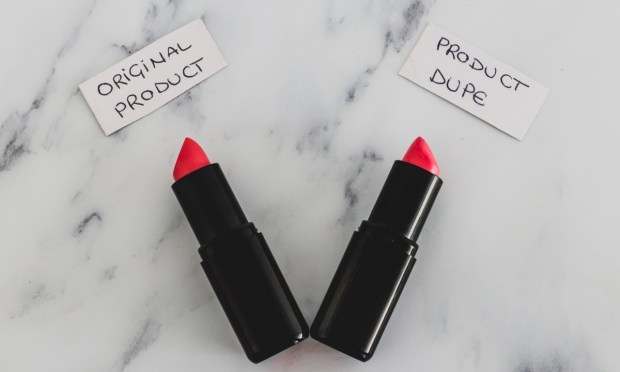No Shame in the Game: Why Consumers Are Proudly Flaunting Dupes

“Dupe, private label, call it what you want, consumers want more,” PYMNTS said in March, and that’s a sentiment that lives on. This is because inflation is highly relevant, much like it was earlier this year.
But while dupes have become a trend, it’s also no longer a hush-hush affair as it once was. In fact, snagging duplicates has become a flaunt-worthy feat.
Difference Between Dupe and Fake
Dupes and fakes are not the same.
Dupes serve as a cost-effective alternative to high-end products, available at a fraction of the cost, appealing to consumers seeking alternatives. In contrast, fakes are products crafted to closely resemble higher-end counterparts, often featuring identical or very similar logos and branding.
The purpose of dupes is to provide an alternative for consumers who may not have the means to afford the higher-end product. The intention behind fakes is to mislead consumers or others into believing the item is authentic.
Dupes are considered legal as long as they do not infringe on any trademarks or patents. Fakes are illegal as they violate trademark laws and are typically manufactured and sold without the authorization of the trademark owner.
Dupes strive to deliver comparable results to higher-end products, while fakes are frequently crafted with inferior quality materials and do not perform as effectively as the authentic product.
How Did Dupe Trend Start?
The surge of dupes in online culture has been driven by TikTok in recent years, and there has been a change in how consumers perceive dupe shopping.
To provide context, TikTok videos labeled #dupe have accumulated almost 6 billion views thus far. Contrary to being perceived as a symbol of lower status or something shameful, buying dupes has evolved into a source of pride for consumers.
Some individuals view dupes not merely as substitutes for the authentic product but rather as a “test run” to gauge how frequently they would use or “reach” for that item in real life.
As an example, one TikToker mentioned buying dupe UGGs, saying she justified spending over $130 by assessing how consistently she reached for those faux UGGs to create outfits.
Removed Stigma Around Dupes
Duplicates are now being showcased rather than viewed as some sort of shameful act.
Consumers are sharing their discoveries on social media, informing others about how they can obtain equivalent quality for a lower cost. The discerning, budget-conscious shopper is now admired, shifting the focus away from those who spend frivolously. Consequently, duplicates are prevalent across various retail categories, from beauty products to consumables found in the grocery aisle.
But why are consumers finding dupes attractive?
According to the University of Michigan’s preliminary research results, consumers’ confidence in the economy, particularly regarding inflation, is declining. Additionally, they seem to be gearing up for ongoing price pressures.
The University of Michigan’s initial findings for November indicate a continued decrease in overall U.S. consumer sentiment for the fourth consecutive month. The overall sentiment index fell to 60.4 in November, down from October’s 63.8. The assessment of current conditions dropped from 70.6 the previous month to 65.7, while the expectations index, reflecting the outlook for the future, declined from 59.3 in October to 56.9. These readings represent their lowest levels since May.
According to the Michigan study, consumers anticipate a 4.4% inflation rate one year from now, showing an increase from the previous month’s 4.2%. Over a five-year horizon, the expectation for inflation has risen to 3.2%, up from the 3% forecasted just last month. The university noted that this latest five-year survey reflects the highest level since 2011.
Moreover, in the collaborative report titled “New Reality Check: The Paycheck-to-Paycheck Report — The Savings Deep Dive Edition,” a joint effort between PYMNTS Intelligence and LendingClub, it was discovered that consumers have been relying on their savings as a buffer against inflationary pressures. However, this financial cushion is gradually diminishing.
This is due to the fact that inflation erodes the purchasing power available both in hand and in the bank. As a result, PYMNTS observed a decline of a few percentage points in the value of “real” savings.
Particularly concerning is the middle-income segment, over half of the population, which has witnessed an 18% decline in their accessible savings in real terms over the past year. The income bracket of $50,000 to $100,000 per year no longer stretches as far as it once did, and the savings set aside does not provide the anticipated relief. Just slightly more than a third of consumers in the low- and middle-income ranges anticipate an increase in their savings.
And according to additional data from PYMNTS Intelligence, 85% of consumers believe that their incomes will not keep up with the pace of inflation.
Considering that consumers anticipate inflation persisting until 2025— with prices having increased by over 20% since 2019— it is logical to expect that the resulting pressures and the less optimistic outlook could prompt additional efforts to tighten belts in the coming months.
